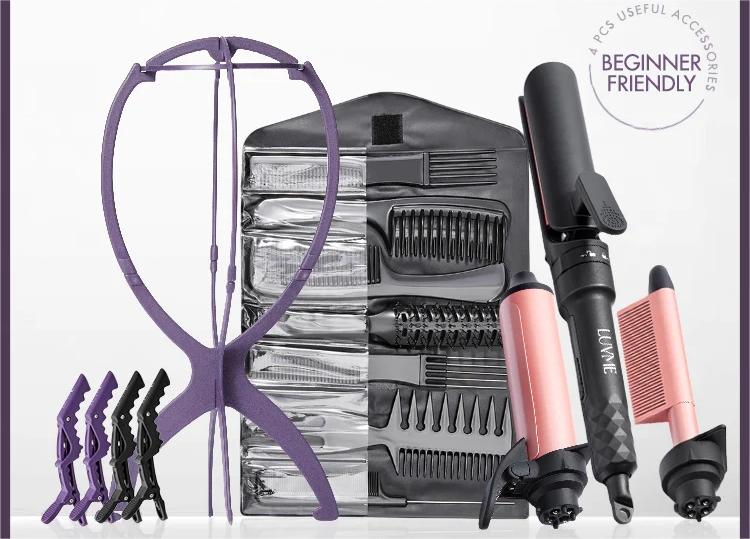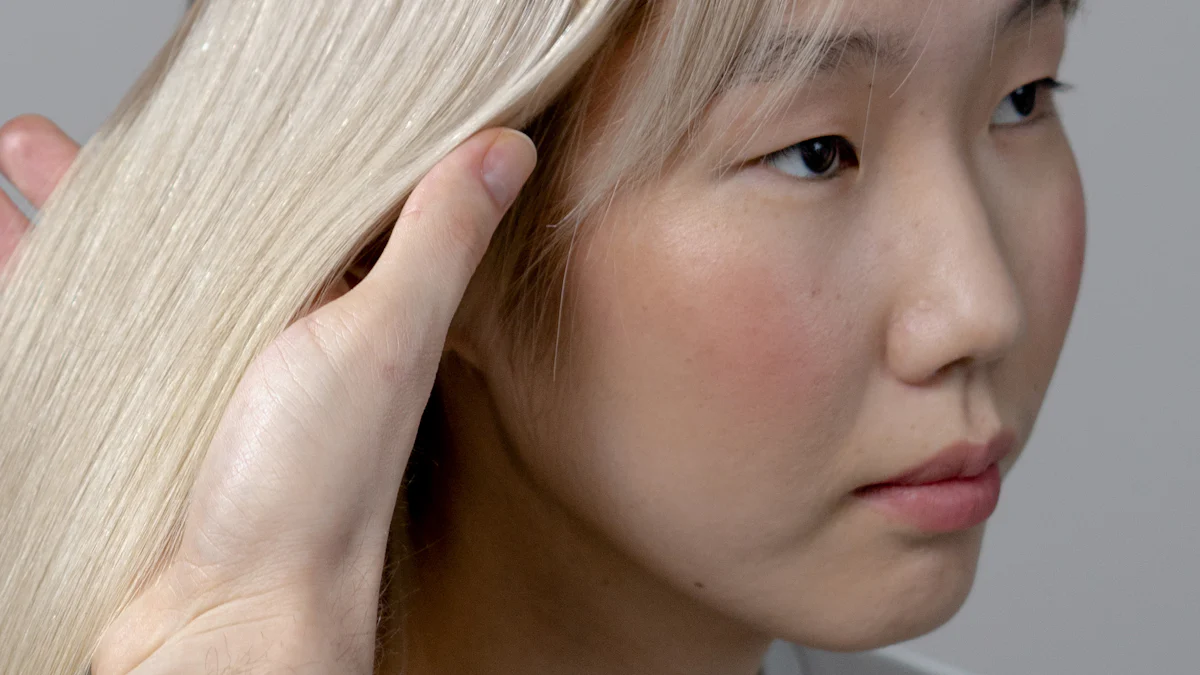Essential Tips for Maintaining Full Lace Front Wigs

Wigs have become very popular lately. The worldwide market for wigs and extensions was worth USD 6.46 billion in 2022. It is expected to grow by 8.4% from 2023 to 2030. Wigs help people look better and feel more confident. Taking care of wigs makes them last longer and look good. Full lace front wigs, including the braided lace front wig, are flexible and look real. Keeping these wigs nice needs special care methods. Johnson says to take off wigs at night to make them last longer. Luvmeforyou sells high-quality wigs for fans.
Understanding Full Lace Front Wigs
Construction and Features
Lace Front Design
Lace front wigs have lace at the front. This makes the hairline look natural. The lace blends with your scalp. Luvmeforyou sells great lace front wigs that look real.
Benefits of Full Lace
Full lace wigs have many good points. The whole cap is made of breathable lace. You can style it in many ways. You can part the hair anywhere. These wigs let you do top knots, buns, and ponytails. They look natural and are very flexible.
Types of Full Lace Front Wigs
Synthetic vs. Human Hair
Synthetic wigs are made from man-made fibers. They cost less but may not look as real as human hair wigs. Human hair wigs use real hair and look more natural. They also offer more styling choices. Kafune Amor Hair has high-quality human hair wigs.
Glueless vs. Glued Variants
Glued full lace wigs need glue to stay on well, but some people might get skin irritation from the glue. Glueless full lace wigs don't need glue; they have straps, elastic backs, and combs for a secure fit without glue. Luvmeforyou and Beauty Edge have great glueless options.
Daily Maintenance Tips

Cleaning and Washing
Recommended Products
Using the right products helps maintain the quality of full lace front wigs. Premium sulfate-free shampoos and conditioners work best. These products prevent dryness and tangling. Avoid harsh chemicals to protect the wig fibers. Luvmeforyou offers a range of wig-friendly hair care products.
Step-by-Step Cleaning Process
-
Detangle the wig using a wide-tooth comb before washing.
-
Fill a basin with cool water and add a small amount of sulfate-free shampoo.
-
Submerge the wig and gently swish it around. Avoid rubbing or twisting.
-
Rinse thoroughly with cool water until all shampoo is removed.
-
Apply a premium conditioner, focusing on the ends. Let it sit for a few minutes.
-
Rinse again with cool water to remove all conditioner.
-
Gently squeeze out excess water with a towel. Do not wring or twist.
-
Place the wig on a wig stand to air dry. Avoid direct sunlight and heat sources.
Styling and Handling
Safe Styling Tools
Using the right tools prevents damage to the wig. Opt for low-heat styling tools if using human hair wigs. Avoid hot styling tools on synthetic wigs. Use wide-tooth combs and soft-bristle brushes to detangle. VERA QIN recommends using a wig stand while styling to maintain the shape.
Avoiding Damage
Avoid exposing wigs to extreme heat. Keep wigs clear of extreme heat sources like ovens and open flames. Do not wear wigs while swimming or showering. Remove the wig at night to let natural hair breathe. Follow these tips to avoid damage and extend the lifespan of the wig.
Long-Term Care

Storage Solutions
Proper Storage Techniques
Proper storage keeps full lace front wigs in good condition. Use a wig stand or a mannequin head to maintain the shape. Store wigs in a cool, dry place away from direct sunlight. Cover the wig with a silk or satin scarf to protect it from dust.
Avoiding Tangling
Tangling can damage full lace front wigs. Gently comb the wig before storing. Use a wide-tooth comb to detangle. Avoid using harsh brushes. Apply a light mist of Glued Blasting Freeze Spray to keep the hair smooth. This helps prevent tangles and keeps the wig looking fresh.
Regular Inspections
Checking for Wear and Tear
Regular inspections help identify issues early. Check the lace for any signs of fraying or tears. Examine the hair for shedding or thinning. Look for any bald spots. Inspect the wig cap for any loose threads or damage. Early detection allows for timely repairs.
When to Seek Professional Help
Some issues require professional attention. Seek help if the lace has significant tears. Consult a wig specialist if the hair is excessively shedding. Professionals can repair and restore the wig. They can also offer advice on proper care techniques. Using Bond Release Hair Spray can help remove adhesives without damaging the lace.
Troubleshooting Common Issues
Shedding and Tangling
Causes and Prevention
Shedding and tangling can significantly affect the lifespan of a wig. Full lace front wigs, including the popular Body Wave Lace style, often experience these issues due to improper care. Excessive brushing, especially with harsh tools, can cause shedding. Using heat styling tools on synthetic wigs can also lead to tangling and shedding.
To prevent these problems, always use a wide-tooth comb or a soft-bristle brush. Avoid brushing the wig when wet, as this can weaken the hair fibers. For human hair wigs, limit the use of heat styling tools. When using heat, opt for low-heat settings. Regularly detangle the wig before and after wearing it.
Remedies
If shedding and tangling occur, several remedies can help restore the wig's appearance. For shedding, apply a small amount of leave-in conditioner to the hair. This helps strengthen the fibers and reduce further shedding. For tangling, gently detangle the wig using a wide-tooth comb. Start from the ends and work your way up to the roots.
For severe tangling, soak the wig in a mixture of cool water and a premium conditioner. Let it sit for a few minutes, then gently comb through the tangles. Rinse thoroughly and allow the wig to air dry on a wig stand. Avoid using heat to speed up the drying process, as this can cause more damage.
Maintaining the Lace
Repairing Tears
The lace on full lace front wigs can sometimes tear, especially around the hairline. To repair small tears, use a needle and thread that matches the lace color. Carefully sew the tear, making sure not to pull too tightly. For larger tears, consider using a lace repair kit. These kits often include adhesive patches that can be applied to the damaged area.
For those who prefer professional assistance, many wig specialists offer lace repair services. Regular inspections can help catch small tears before they become larger issues. Always handle the lace gently to avoid unnecessary wear and tear.
Preventing Fraying
Fraying can occur along the edges of the lace, reducing the wig's natural appearance. To prevent fraying, avoid excessive pulling or tugging on the lace. When removing the wig, do so carefully to avoid stressing the lace. Using a lace protector spray can also help strengthen the fibers and reduce fraying.
Store the wig properly when not in use. Place it on a wig stand and cover it with a silk or satin scarf. This protects the lace from dust and friction, which can cause fraying. Regularly check the lace for any signs of wear and address them promptly to maintain the wig's longevity.
Taking care of full lace front wigs makes them look real and last longer. Experts like the Eyelashes Expert at Alien Beauty give great advice on wig care. Clean your wig often, store it properly, and handle it gently. Look for more tips on wig care to learn new tricks. Well-kept wigs let you style them in many ways and feel good about your look.






















